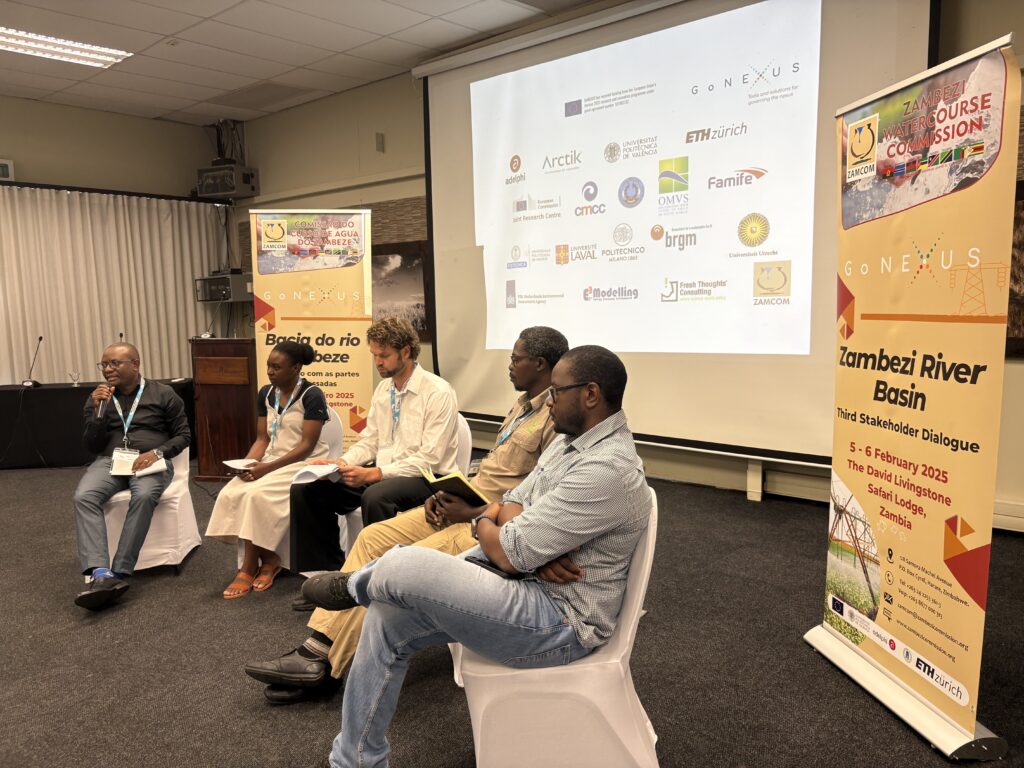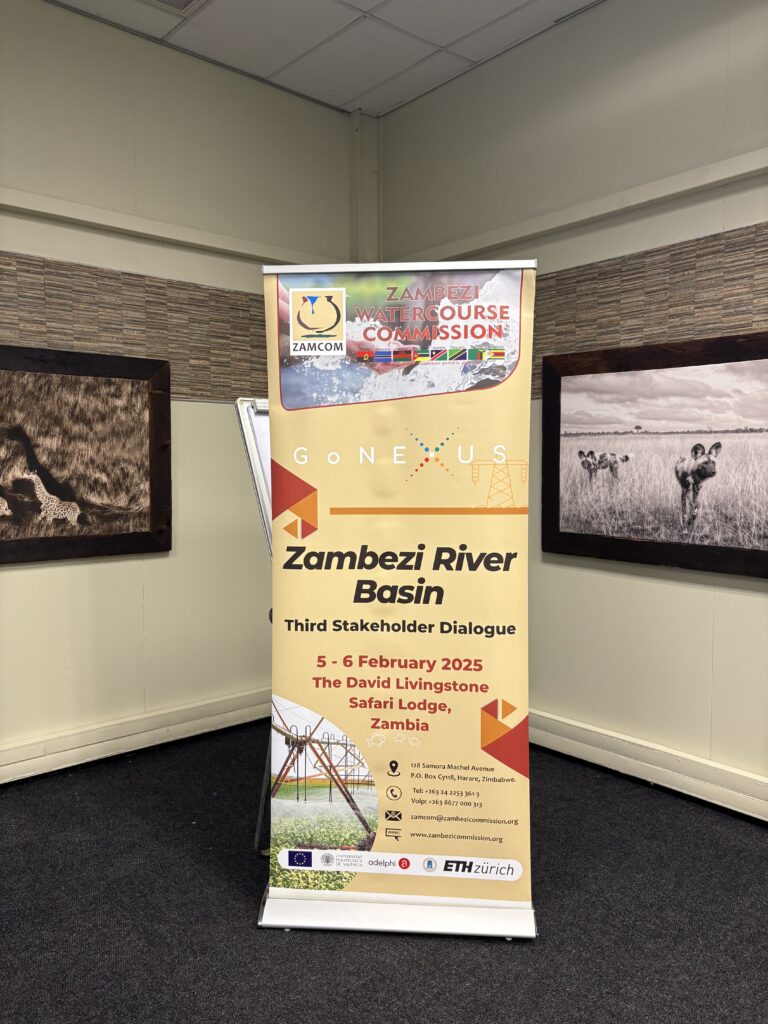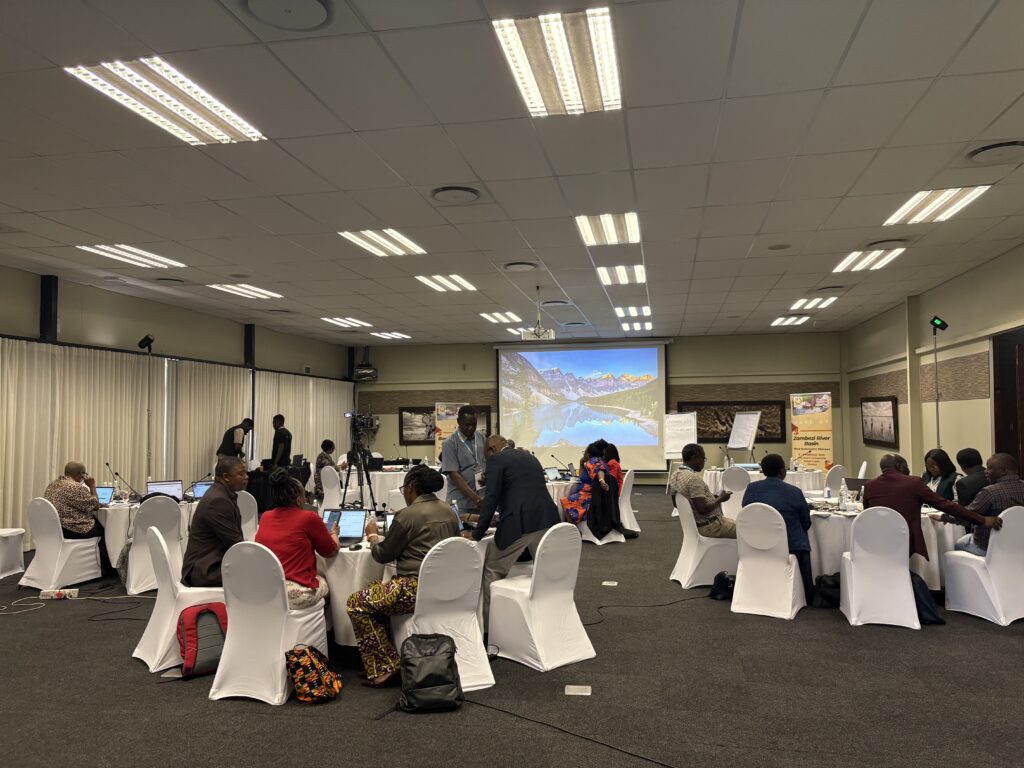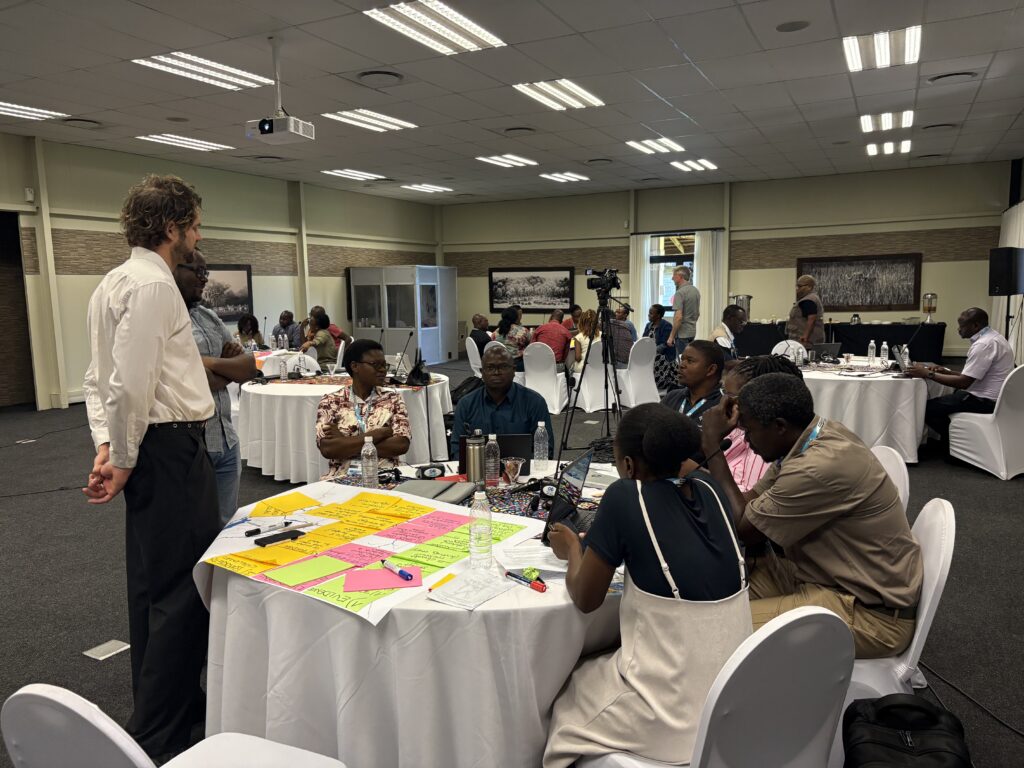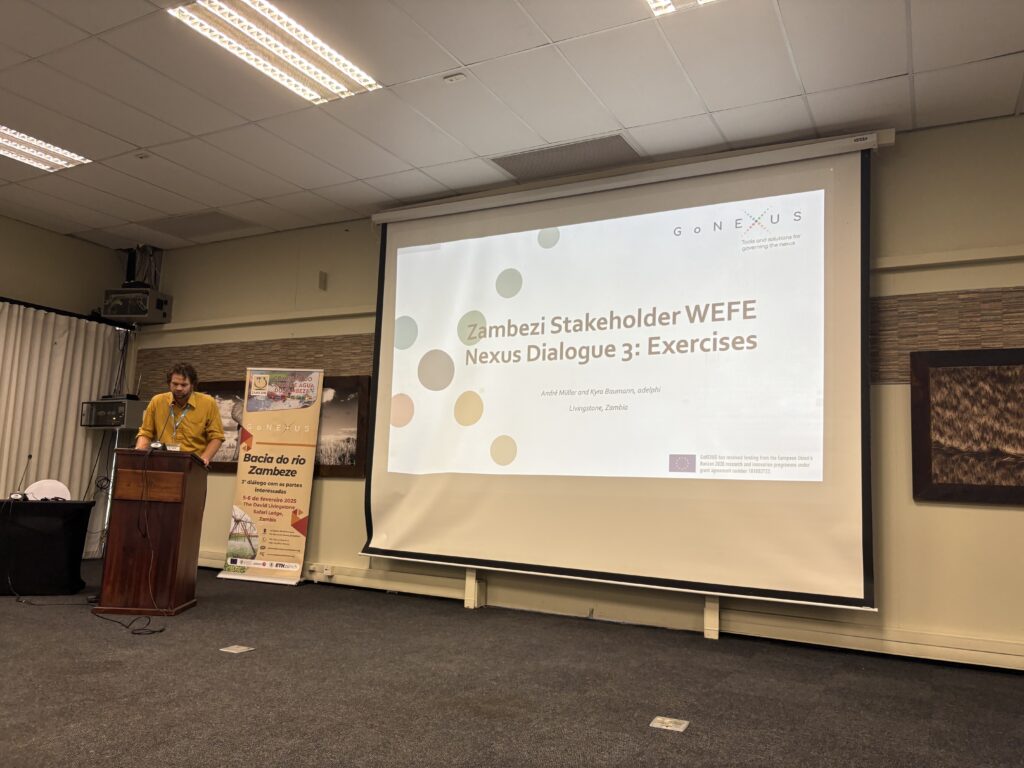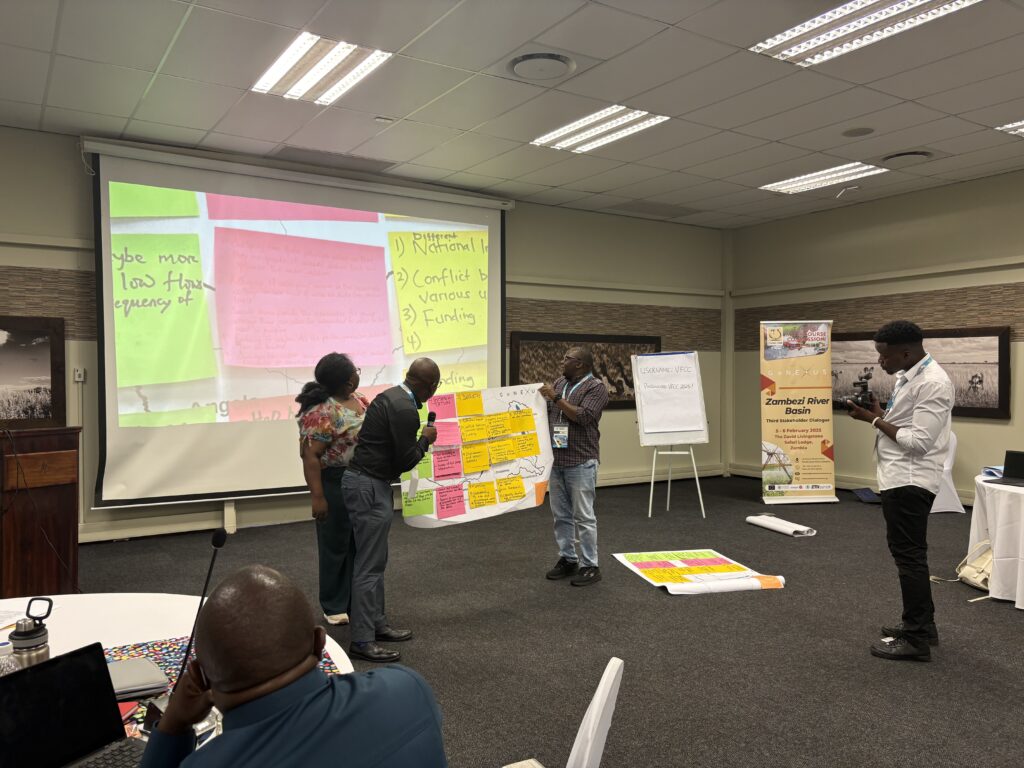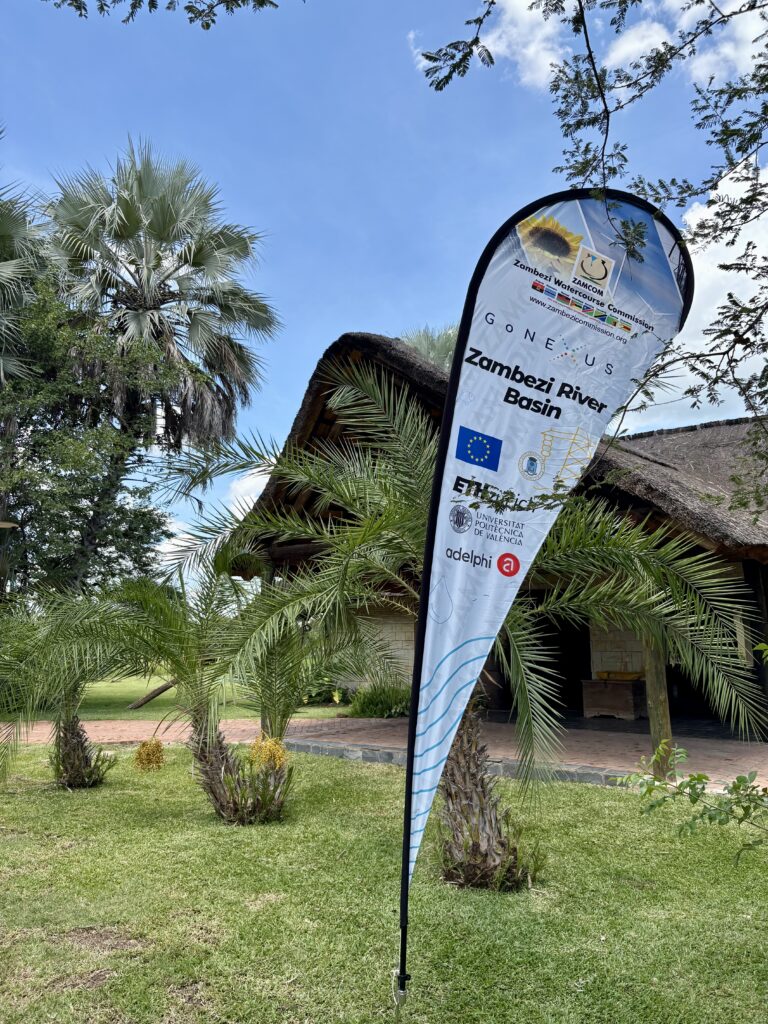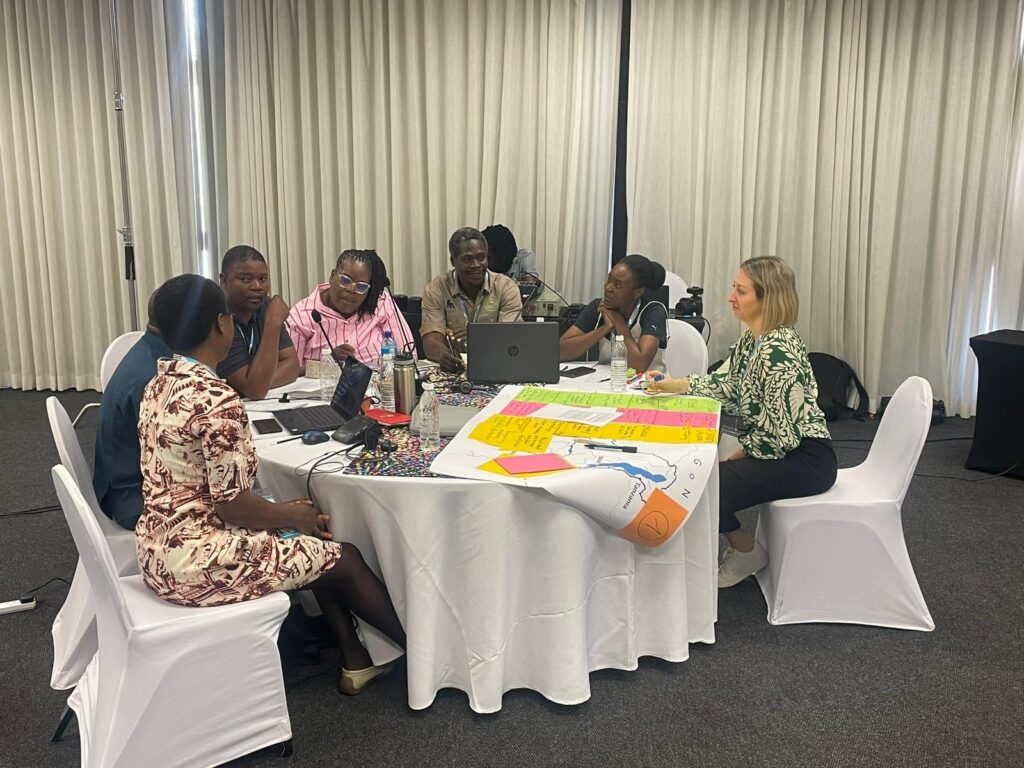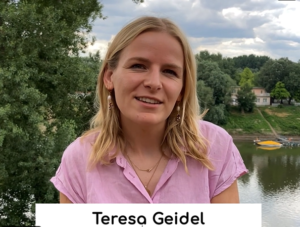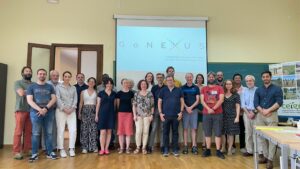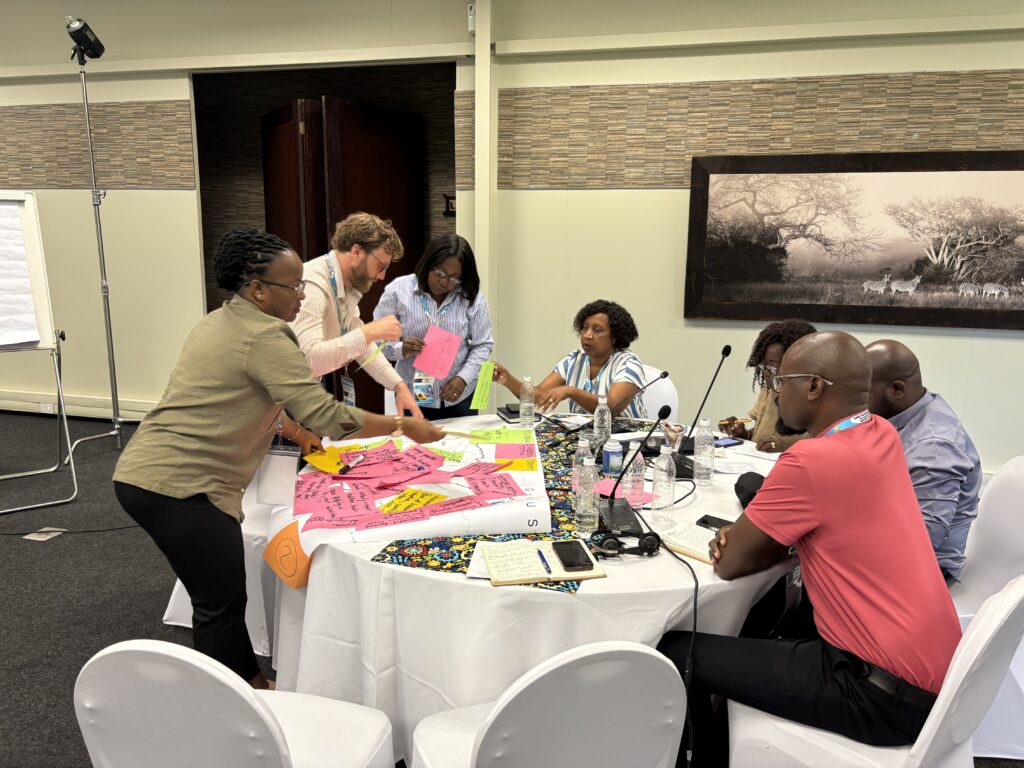
Third Zambezi Dialogue in Livingstone
From 5th to 6th February, the third GoNEXUS Dialogue took place in Livingstone, Zambia.
Organised by the Zambezi Watercourse Commission (ZAMCOM), ETH Zurich, and adelphi, the event marked an important milestone in the project’s completion. The Dialogue offered a platform for stakeholders to both gain valuable insights into the GoNexus modelling and actively contribute to its development.
The modelling-based assessment conducted in GoNexus seeks to understand the Water-Energy-Food-Ecosystem (WEFE) in the Zambezi Watercourse and to identify solutions for future water resources development and management.
Drawing on Previous Dialogues to Validate Key Findings
Building on the foundations laid by the first two Dialogues, this third Dialogue focused on validating the evidence generated by modelling exercises.
The first dialogue identified pressing WEFE Nexus challenges, while the second focused on finding viable solutions through scenario-building.
The modelling based on the outcomes of the first two Dialogues integrated selected Nexus solutions which align with the development scenarios outlined in the Zambezi Strategic Plan, the main strategy that guides water-decision making in the Zambezi Watercourse.
Exploring Renewable Energy Solutions
The event began with welcome remarks from Felix Ngamlagosi, Executive Secretary of ZAMCOM, and introductory words from Paolo Burlando of ETH Zurich, on the overall objectives of the GoNEXUS project, the specific goals of the Zambezi case study, and the methodology and purpose behind this third session.
Matteo Giuliani from the Politecnico di Milano (POLIMI) delivered the first presentation on modelling, focusing on the potential of floating solar photovoltaic systems in hydropower dam reservoirs within the Zambezi basin. He also highlighted the economic benefits of this technology.
A key takeaway was the growing risk to hydropower from hydroclimatic variability, leading to less reliable energy generation. This highlights the need for anticipatory actions to strengthen energy system resilience.
Analysing the Zambezi Water Balance
The second modelling presentation by Scott Sinclair and Mikhail Smilovic from ETH Zurich examined the Zambezi water balance, analysing its inflows and outflows and how they may shift in response to future socio-economic and climate changes.
Their findings indicated a higher frequency of low flows, extreme flows including floods, and a potential decrease in water flowing into the Indian Ocean due to reservoir development.
Developing Action Plans for Policy and Practice
The second day began with breakout group discussions, where participants actively engaged in developing action plans to explore how findings and modelling evidence can be integrated in practice across their respective countries, such as national policies or planning processes.
Each group presented their outcomes, followed by a roundtable discussion moderated by André Müller from adelphi. This session brought together experts from each WEFE sector to explore how their in part diverging interests and objectives could be aligned and advanced by ZAMCOM, national governments, and other actors to ensure sustainable water management.
Strengthening Collaboration for a Sustainable Future
The Dialogue concluded with Paolo Burlando summarising the outcomes of the two-day event, followed by closing remarks from Felix Ngamlagosi.
To round off the successful exchange, ZAMCOM organised a boat trip on the Zambezi, allowing participants to deepen their discussions in a relaxed setting against the backdrop of the stunning sunset.
Overall, the third Zambezi Dialogue was a resounding success, thanks to strong stakeholder engagement, and is expected to support the practical implementation of the WEFE Nexus in the Zambezi Watercourse.
Gallery
